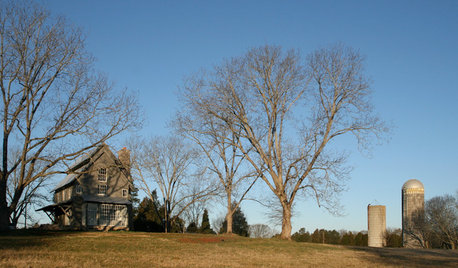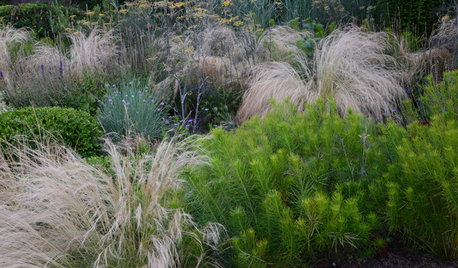Harvestmanss 1/3 rule
curtis
10 years ago
Related Stories

HOUZZ TOURSHouzz Tour: Relaxation Rules in a Rural Weekend Getaway
Straightforward materials and simple architectural forms provide a comfortable farmhouse-style escape from the city
Full Story
HOUZZ TOURSMy Houzz: Raw Aesthetics Rule in a Toronto Family Home
Exposed plywood and beams, rough concrete and unfinished walls give the interiors a unique look — and give the family more time together
Full Story
HOUZZ TOURSMy Houzz: Creative Renters Triumph Over the ‘No Paint’ Rule
Not allowed to paint and limited with nails, a design-minded couple uses furnishings and textiles to make their rooms stand out
Full Story
PETSHouzz Pets Survey: Who Rules the House — Dogs or Cats?
New data shows that pets make people happy, and pet owners love spending big to return the favor
Full Story
DECORATING GUIDES7 Design Rules and Why You Should Break Them
Think tile is only for kitchens and bathrooms? Art should hang at eye level? Time to consider breaking these old rules
Full Story
DECORATING GUIDES11 Area Rug Rules and How to Break Them
How big should an area rug be? These guidelines will help you find the right size and placement
Full Story
DECORATING GUIDESDitch the Rules but Keep Some Tools
Be fearless, but follow some basic decorating strategies to achieve the best results
Full Story
PAINTING10 Rules for Your Next Painting Project
Take your next painting journey from ‘argh!’ to ‘ta-da!’ with these designer tricks
Full Story
TASTEMAKERSAsk an Expert: What Is the One Design Rule You Live By?
Eight home experts share their top design rules
Full Story
GARDENING GUIDES4 Ways to Break the Rules in Your Garden
For a more creative landscape design, take a different approach to planting
Full Story






curtisOriginal Author
bart1
Related Professionals
Birmingham Landscape Architects & Landscape Designers · Brentwood Landscape Architects & Landscape Designers · Clemson Landscape Architects & Landscape Designers · Kenmore Landscape Architects & Landscape Designers · Suffern Landscape Architects & Landscape Designers · Aurora Landscape Contractors · Americus Landscape Contractors · Annandale Landscape Contractors · Galt Landscape Contractors · Oxnard Landscape Contractors · Parkland Landscape Contractors · Spring Landscape Contractors · Sun City Center Landscape Contractors · Wailuku Landscape Contractors · Norridge Landscape Contractorsalan haigh
marknmt
alan haigh
marknmt
curtisOriginal Author
alan haigh